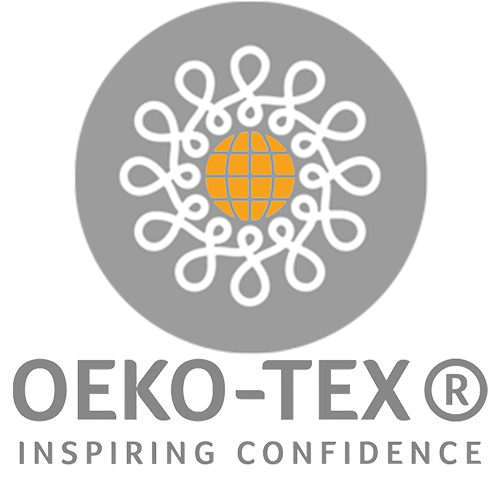Acrylic Fabrics
Our premium acrylic fabric is a versatile, high-performance textile ideal for both fashion and practical applications. Known for its exceptional comfort, durability, and adaptability, acrylic fabric is a preferred choice for high-end fashion design and various craft projects.

Product Details
- Material: 100% Acrylic
- Width: 150 cm
- Weight: 200 g/m²
- Color Options: Multiple colors available to suit diverse design needs
- Features: Soft and comfortable, lightweight and breathable, excellent thermal retention, durable and fade-resistant
Special Processes
- Fine Weaving Technology: Utilizes high-density weaving techniques for enhanced durability and tear resistance.
- High-Temperature Setting: Ensures dimensional stability, preventing deformation and maintaining garment structure.
- Anti-Static Treatment: Incorporates anti-static agents to reduce static buildup, enhancing comfort especially in dry conditions.
- Water and Stain Repellent Finish: Provides effective resistance against water and stains, keeping the fabric clean and extending its lifespan.
- Eco-Friendly Dyeing: Uses environmentally friendly dyeing processes, free from harmful chemicals, ensuring vibrant, long-lasting colors while being kind to the environment.
Differentiation from Ordinary Fabrics
- Comfort: Acrylic fabric is softer and more skin-friendly compared to standard synthetic, improving fiber wearability.
- Breathability: Superior breathability over ordinary fabrics, ensuring comfort during extended wear.
- Thermal Insulation: Provides better warmth, making it ideal for fall and winter apparel.
- Durability: High-density weaving and tear resistance make acrylic fabric more durable and less prone to wear and tear.
- Protection: Anti-static and water-repellent treatments enhance usability in various environments.
Available clothing types
- Women’s Vintage Long Party Dress
- Rose striped back cutout dress
- Solid and striped dresses
- Red tweed dress

Applications
- Fashion Dresses: Soft and lightweight, perfectly contours the body for high-end fashion dresses.
- Casual Tops: Breathable and comfortable, ideal for everyday wear, combining casual and stylish looks.
- Comfortable Sweaters: Warm and durable, a top choice for fall and winter, providing warmth and style.
- Elegant Scarves: Windproof and warm, combining fashion with practicality, a must-have for the colder seasons.
- Warm Jackets: Lightweight yet warm, offering comprehensive protection, ensuring you stay stylish in cold weather.
Care Instructions
To ensure your acrylic fabric garments remain in pristine condition, please follow these care guidelines:
Washing: Hand wash or machine wash in water below 30°C, avoid bleach.
Drying: Air dry or tumble dry on low heat, avoid direct sunlight.
Ironing: Low-temperature ironing, maximum temperature of 110°C.
Storage: Store in a cool, dry place away from direct sunlight.
Can choose colour

FAQs
What are the primary benefits of acrylic fabric?
- Acrylic fabric is renowned for its softness, breathability, thermal insulation, and durability, making it an ideal material for high-quality garments.
What types of clothing is acrylic fabric suitable for?
- Acrylic fabric is versatile, suitable for dresses, tops, sweaters, scarves, and jackets, meeting diverse design needs.
How can I ensure my acrylic fabric garments stay new?
- Follow our care instructions: hand wash or machine wash below 30°C, avoid bleach, low-temperature ironing, and avoid direct sunlight for prolonged periods.
Is acrylic fabric suitable for sensitive skin?
- Yes, acrylic fabric is skin-friendly and suitable for all skin types, including sensitive skin.
How can I order acrylic fabric?
- You can place an order through our website or contact our customer service team for more information and assistance.
Want to learn more FAQs?
Acrylic Fabric: Understanding Its Advantages, Types, and Uses

Acrylic fabric has revolutionized the fashion industry by providing a sustainable and cost-effective alternative to wool. It is a favored textile for many due to its durability. The fabric is appreciated for being easy to care for and comfortable to wear.
In the 1940s, DuPont developed a fabric known as “Fiber A” or acrylic fabric. Initially marketed to mimic silk, it garnered limited interest. However, by the 1950s, DuPont rebranded it as a wool-like fabric—a thicker material with a soft texture that avoided the typical itchiness of natural fibers.
This transformation made acrylic fabric a popular choice for close-fitting garments.
What Is Acrylic Fabric Made Of?
Acrylic fabric is created from synthetic polymer fibers that are spun into fine filaments. These fibers are produced from acrylonitrile, which is derived from materials like petroleum or coal. The acrylonitrile is converted into small pellets known as acrylic resin. These pellets are then used to manufacture acrylic fabric.
A device called a spinneret, which resembles a showerhead, extrudes the acrylic resin, ensuring the fibers remain unbroken. These fibers are then twisted into yarn and woven or knitted into various products.
Advantages of Acrylic Fabric
Acrylic fabric offers several benefits over natural fibers such as wool:
- Cost-Effective: Acrylic fabric is generally more affordable than natural fibers like wool.
- Lightweight and Low Maintenance: It is lighter in weight and requires less maintenance.
- Sun and Chemical Resistance: Acrylic fibers exhibit excellent resistance to sunlight and chemicals.
- Hypoallergenic and Moth-Resistant: These fibers are hypoallergenic and resistant to moths.
- Color Retention: Acrylic clothing retains vibrant colors even after multiple washes and can be dyed into various shades.
- Wrinkle-Resistant and Quick-Drying: They resist wrinkles and dry quickly.
- Versatile Textures: Available in a variety of textures, from soft and fluffy to smooth and sleek.
Disadvantages of Acrylic Fabric
Despite its advantages, acrylic fabric has some drawbacks:
- Pilling and Static: It is prone to pilling and static buildup.
- Breathability: Acrylic is less breathable compared to natural fibers like cotton or wool.
- Temperature Regulation: Some may find it uncomfortable as it does not regulate temperature well.
- Environmental Impact: Acrylic is not as eco-friendly as natural fibers.
- Safety Concerns: Compared to natural fibers, it can melt or ignite quickly, posing potential safety hazards.
Conclusion
Acrylic fabric is a versatile synthetic material with numerous advantages. It is soft and durable, capable of withstanding exposure to sunlight and chemicals. It has effectively replaced wool in clothing, home furnishings, upholstery, and outdoor gear.
While acrylic fabric has many benefits, it also has some drawbacks. These include the use of non-renewable resources, poor airflow, and pilling. Despite these issues, it remains a practical and affordable option for many applications.










